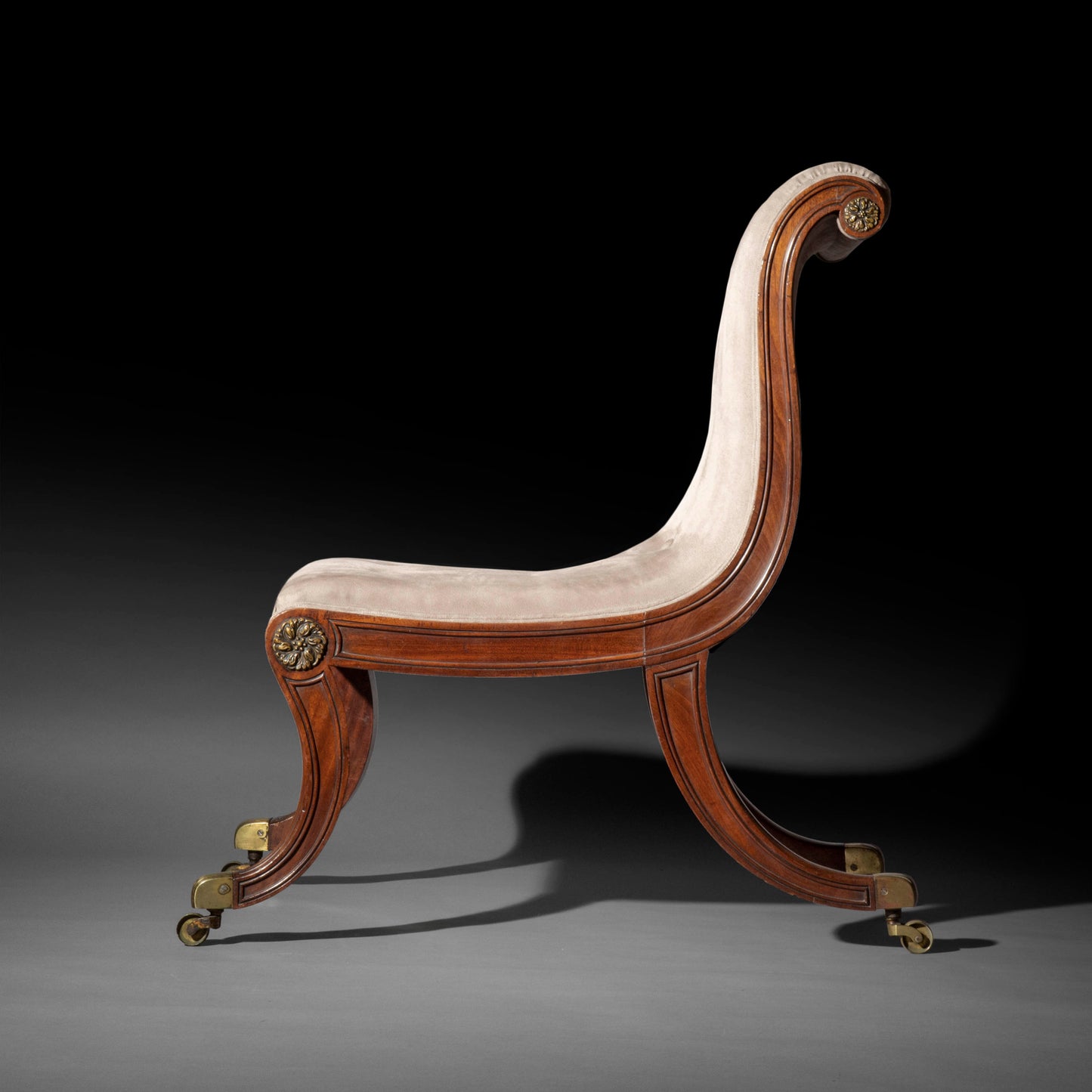
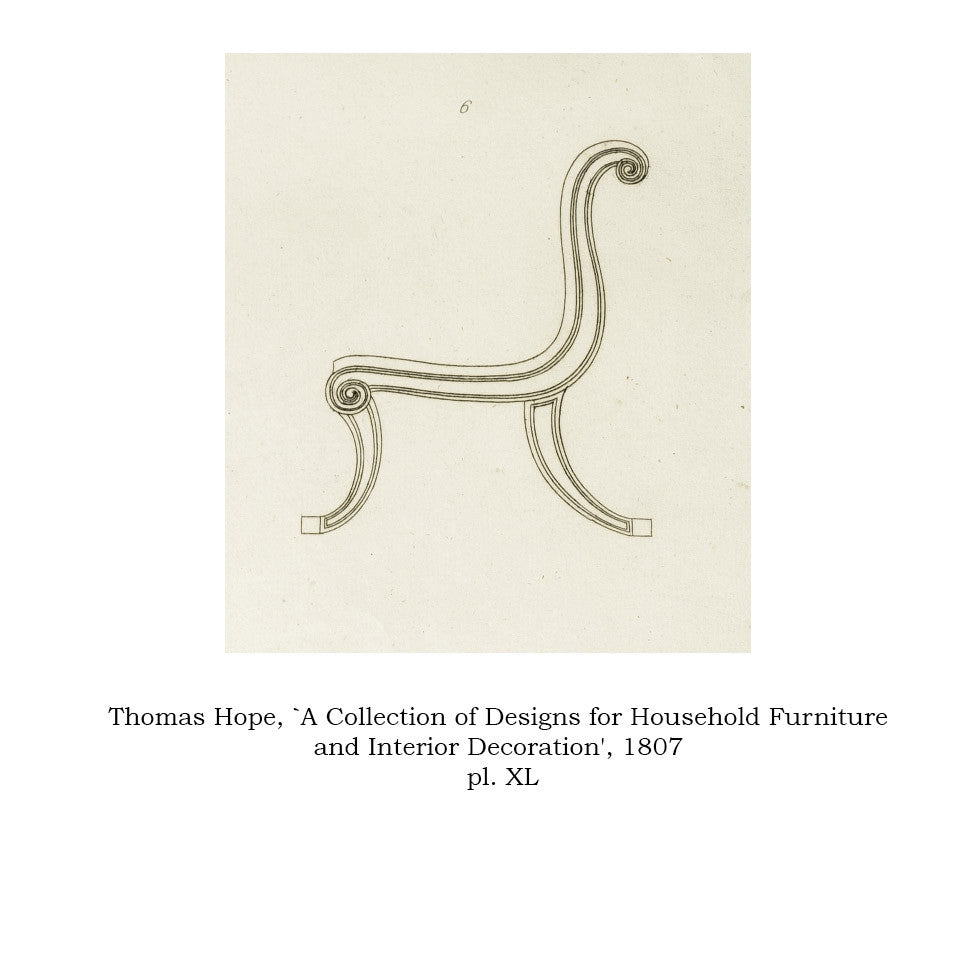
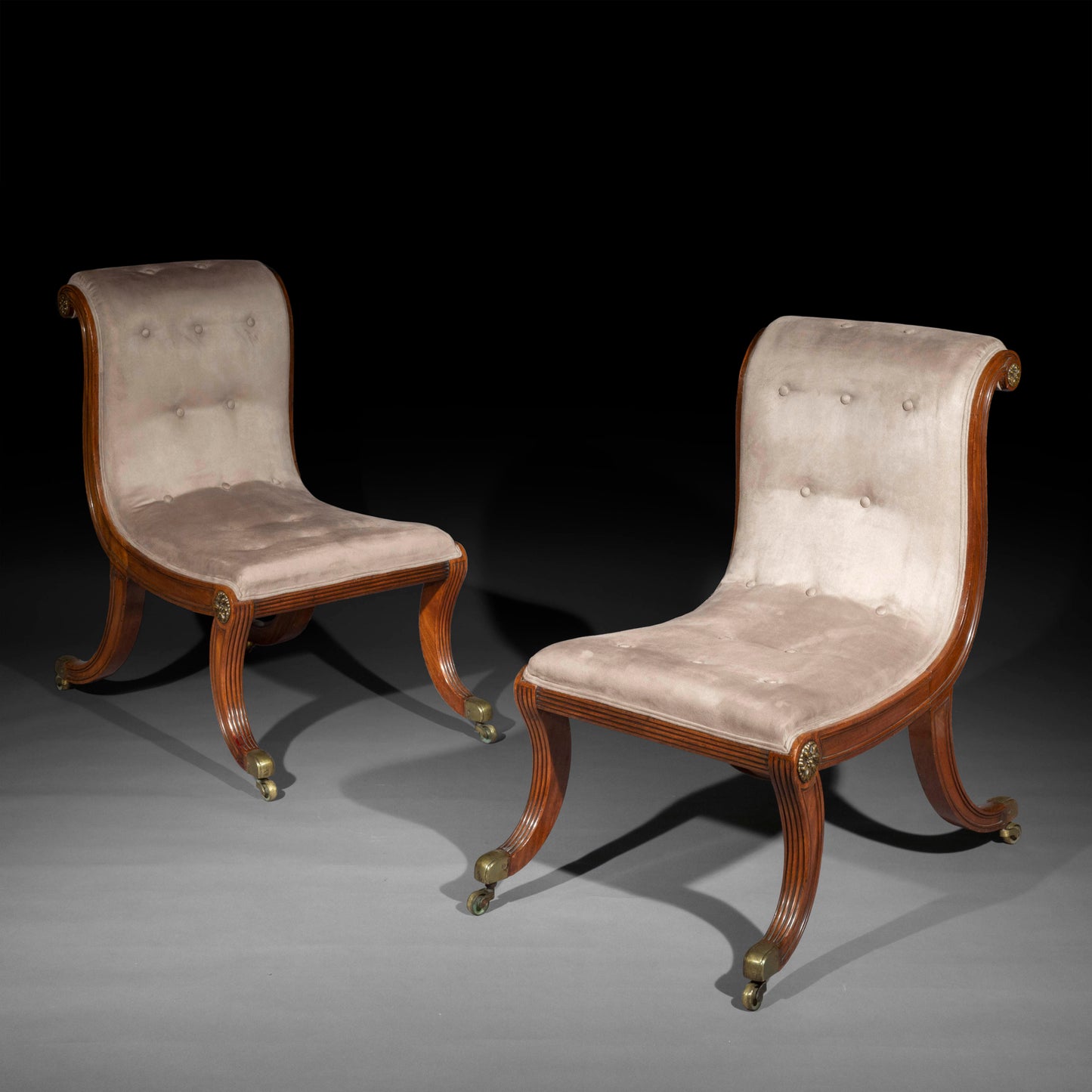

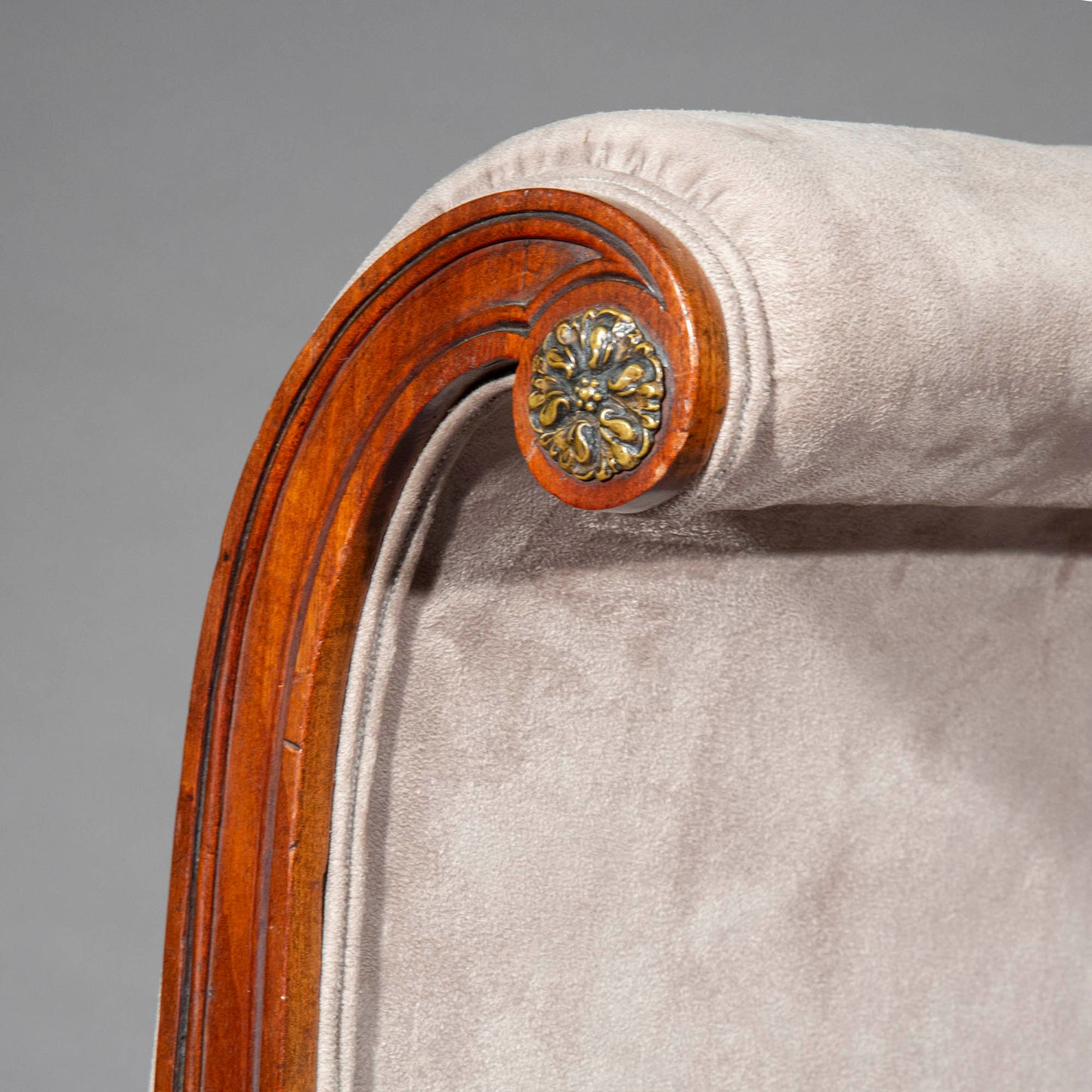
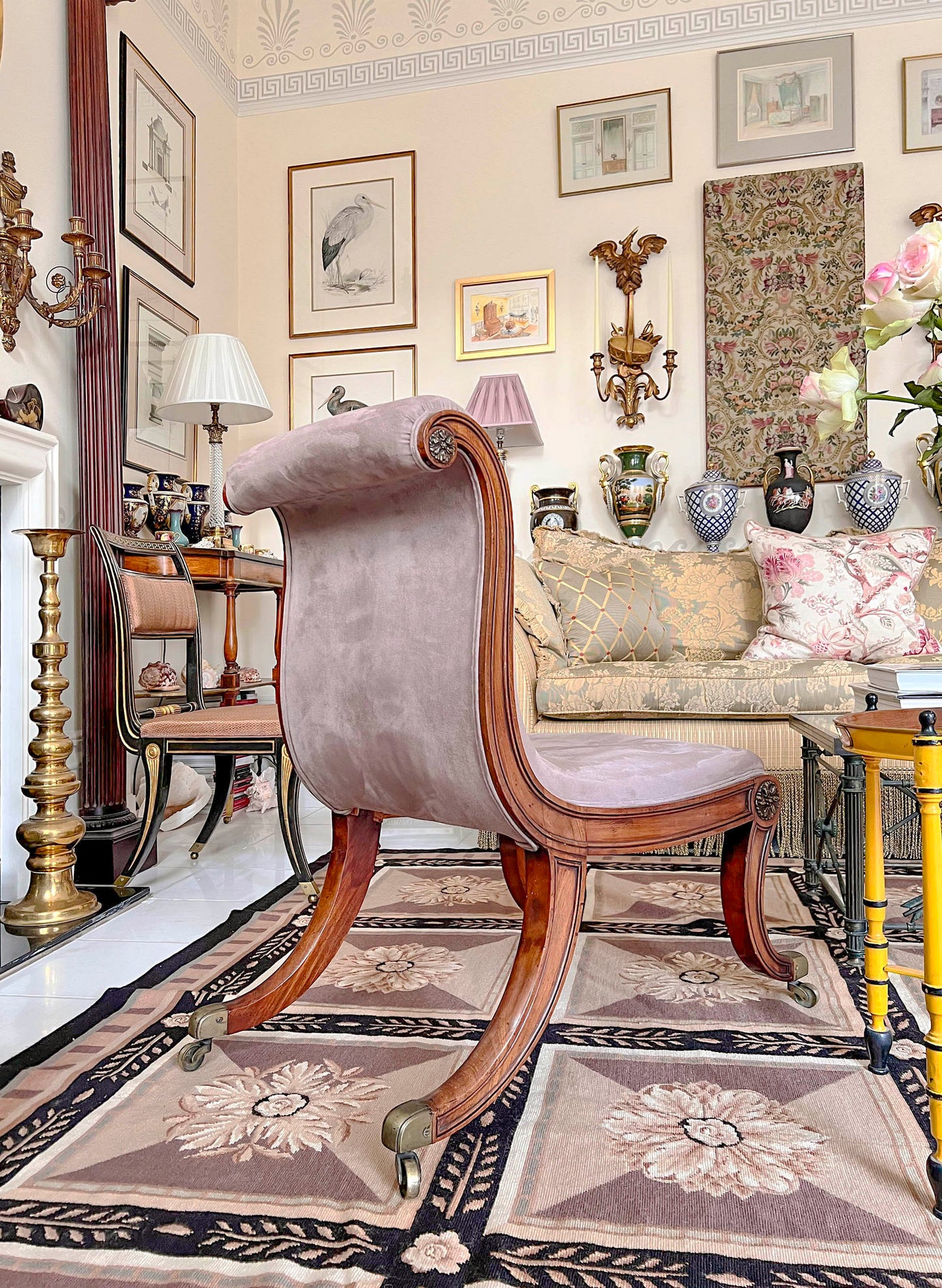

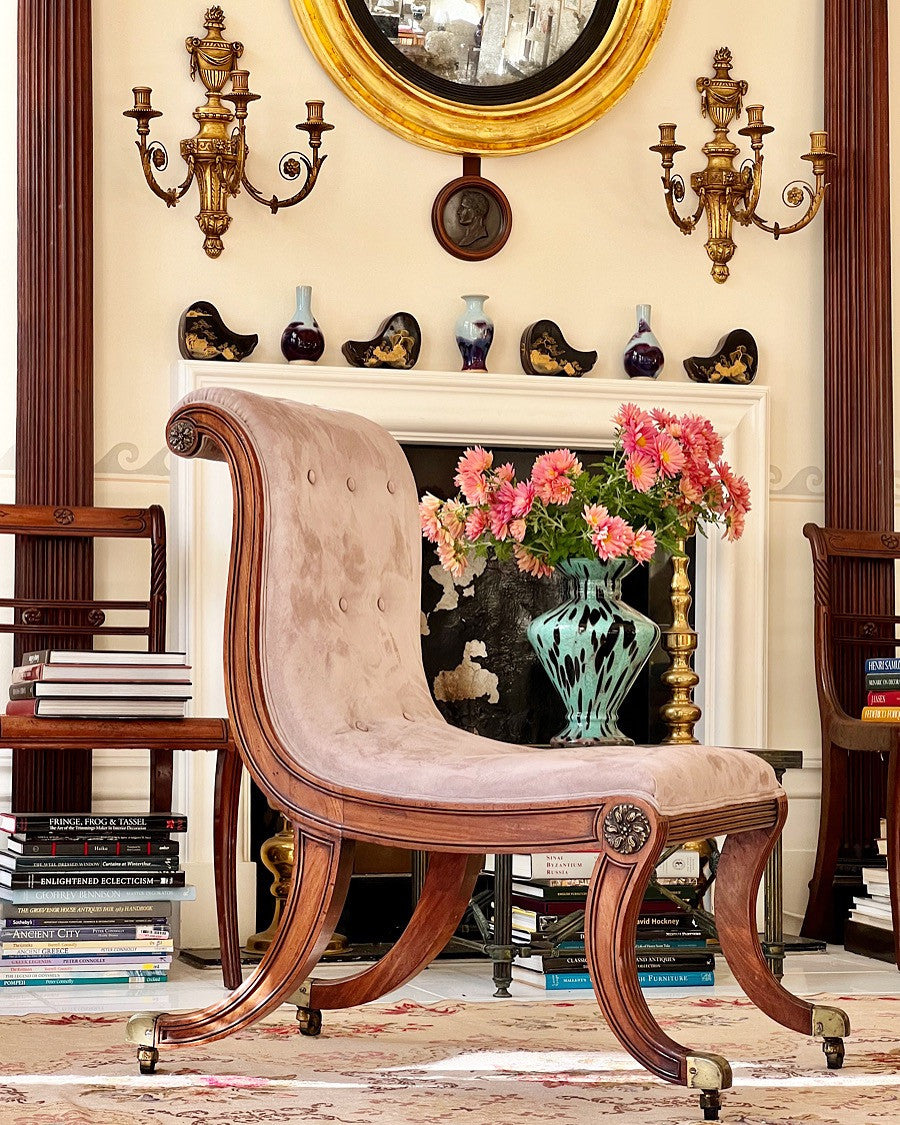
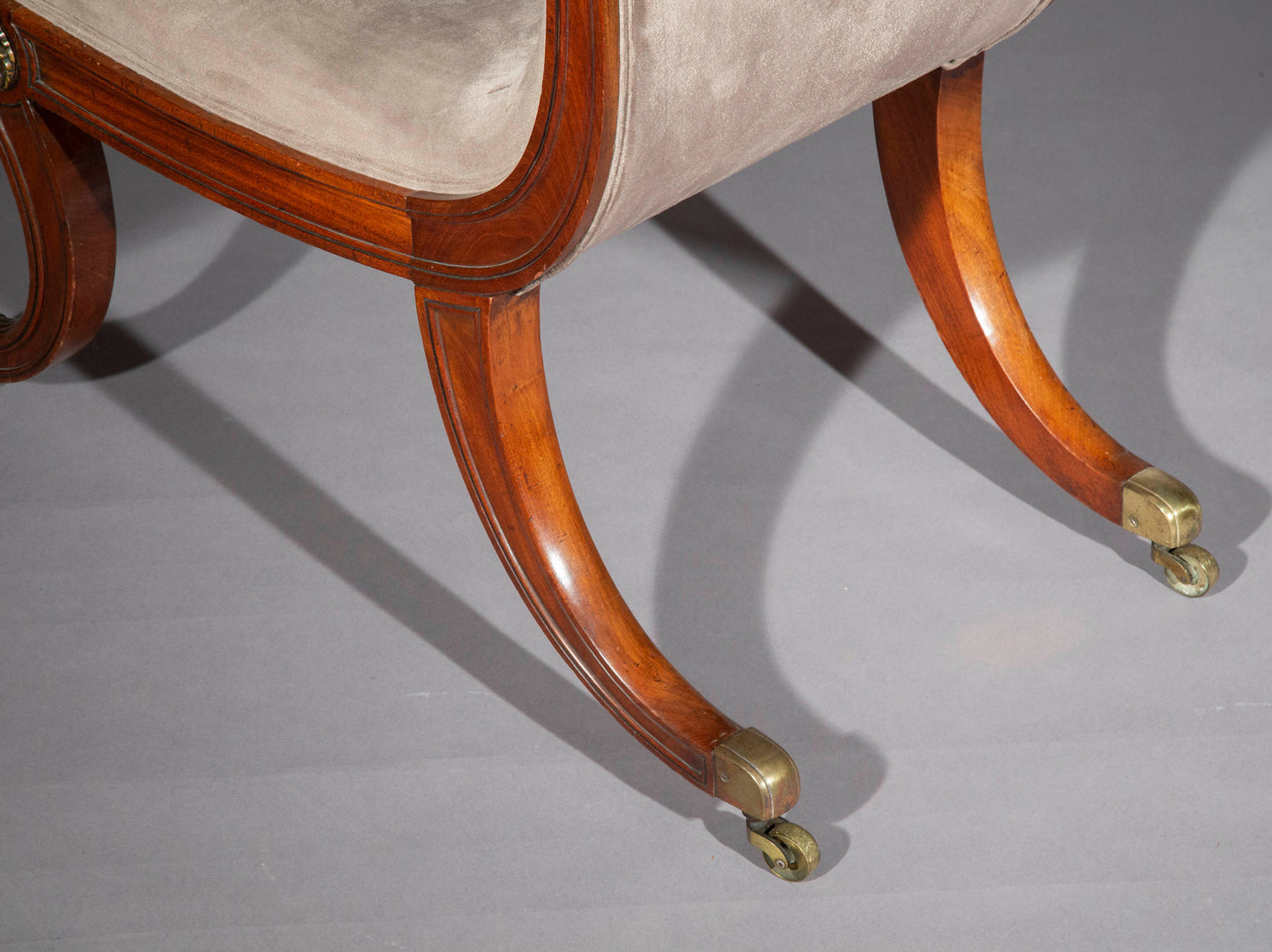
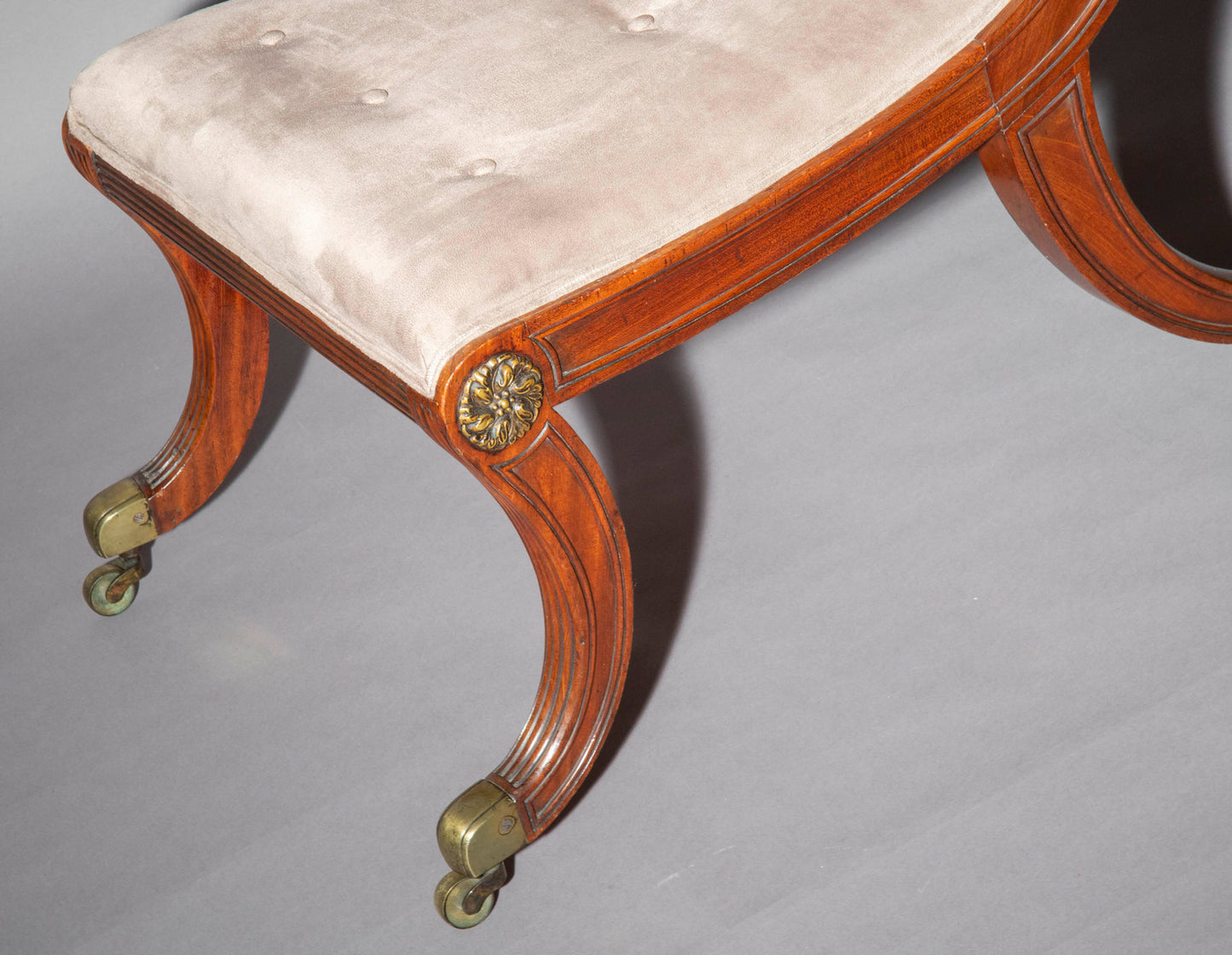
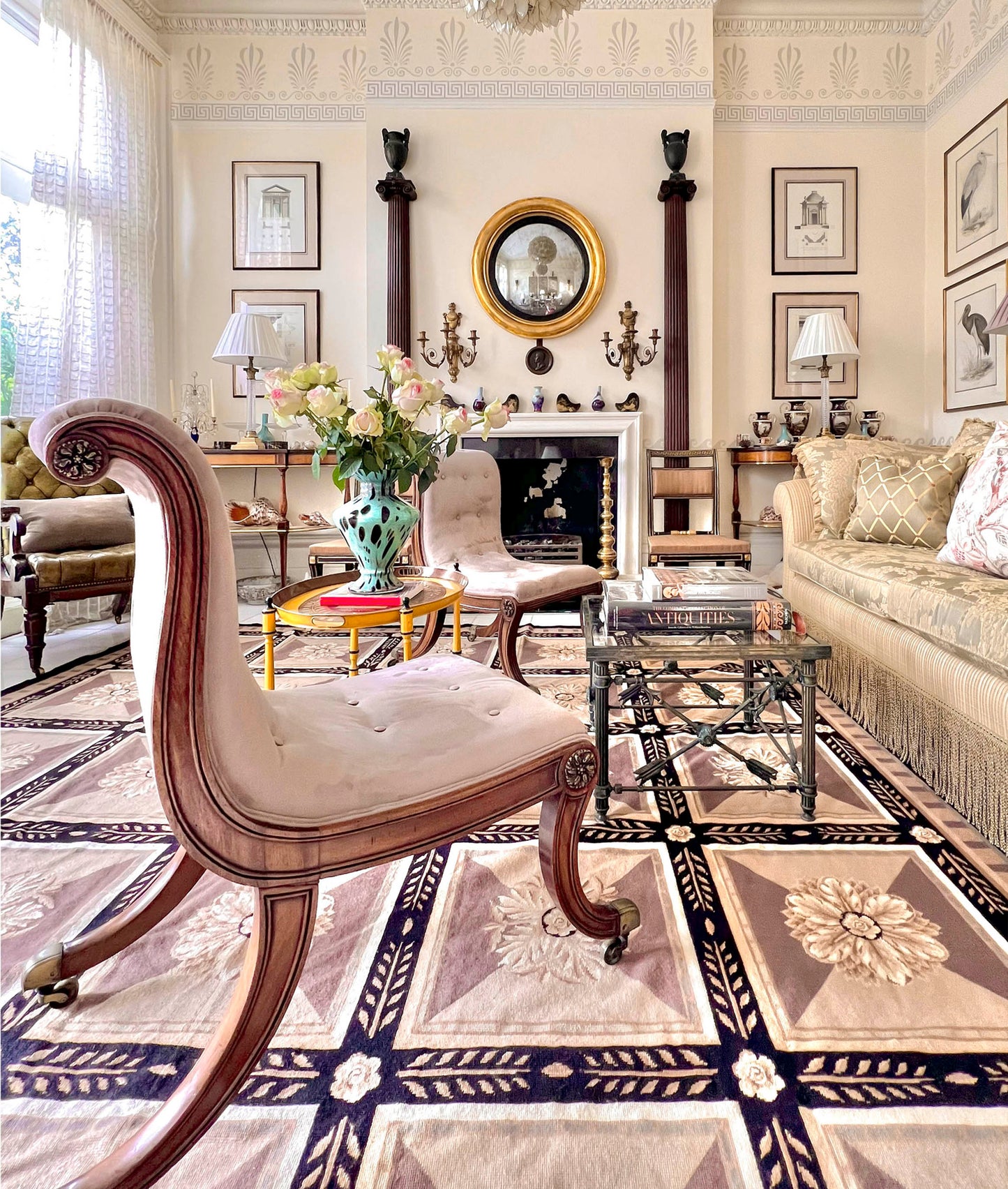
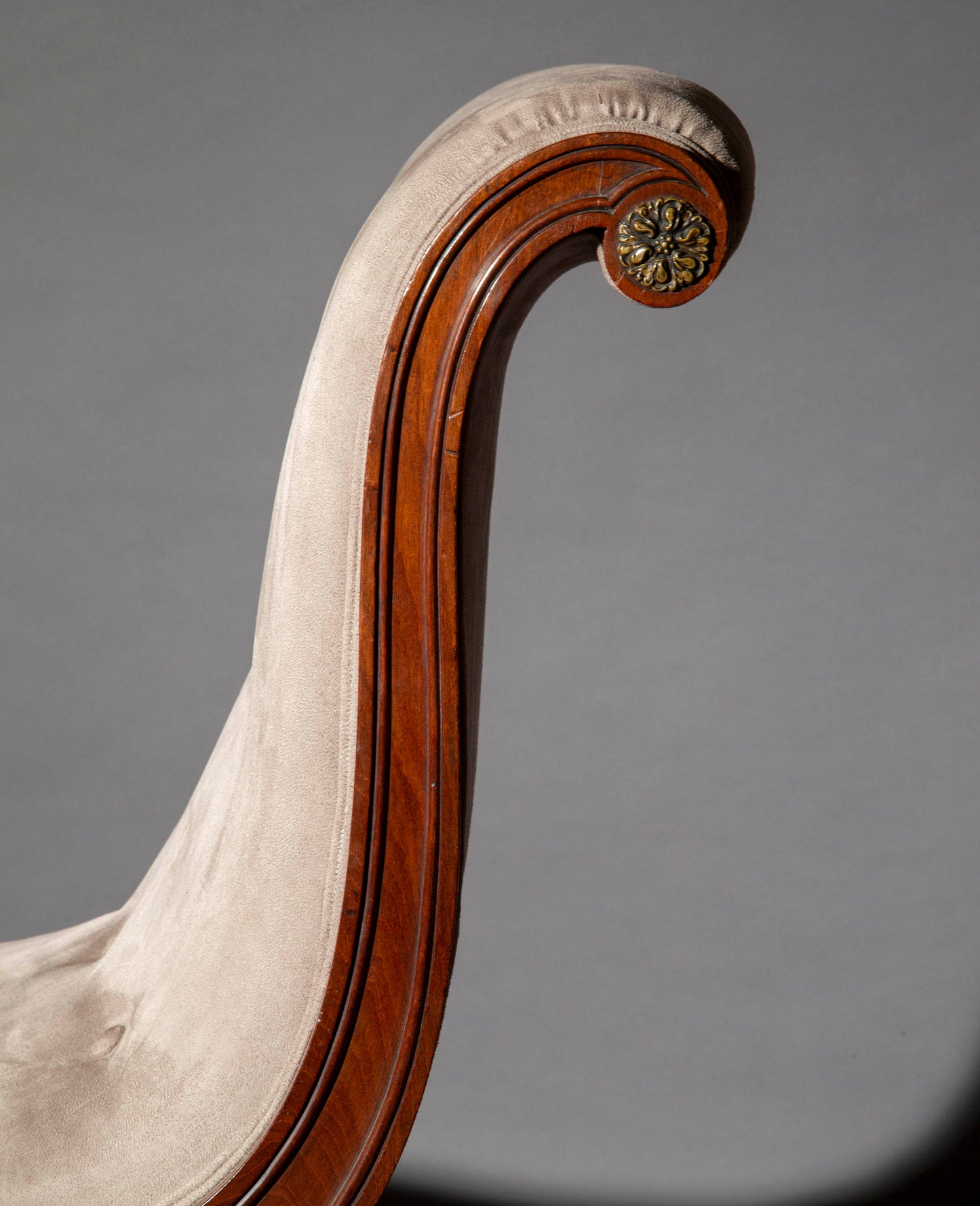
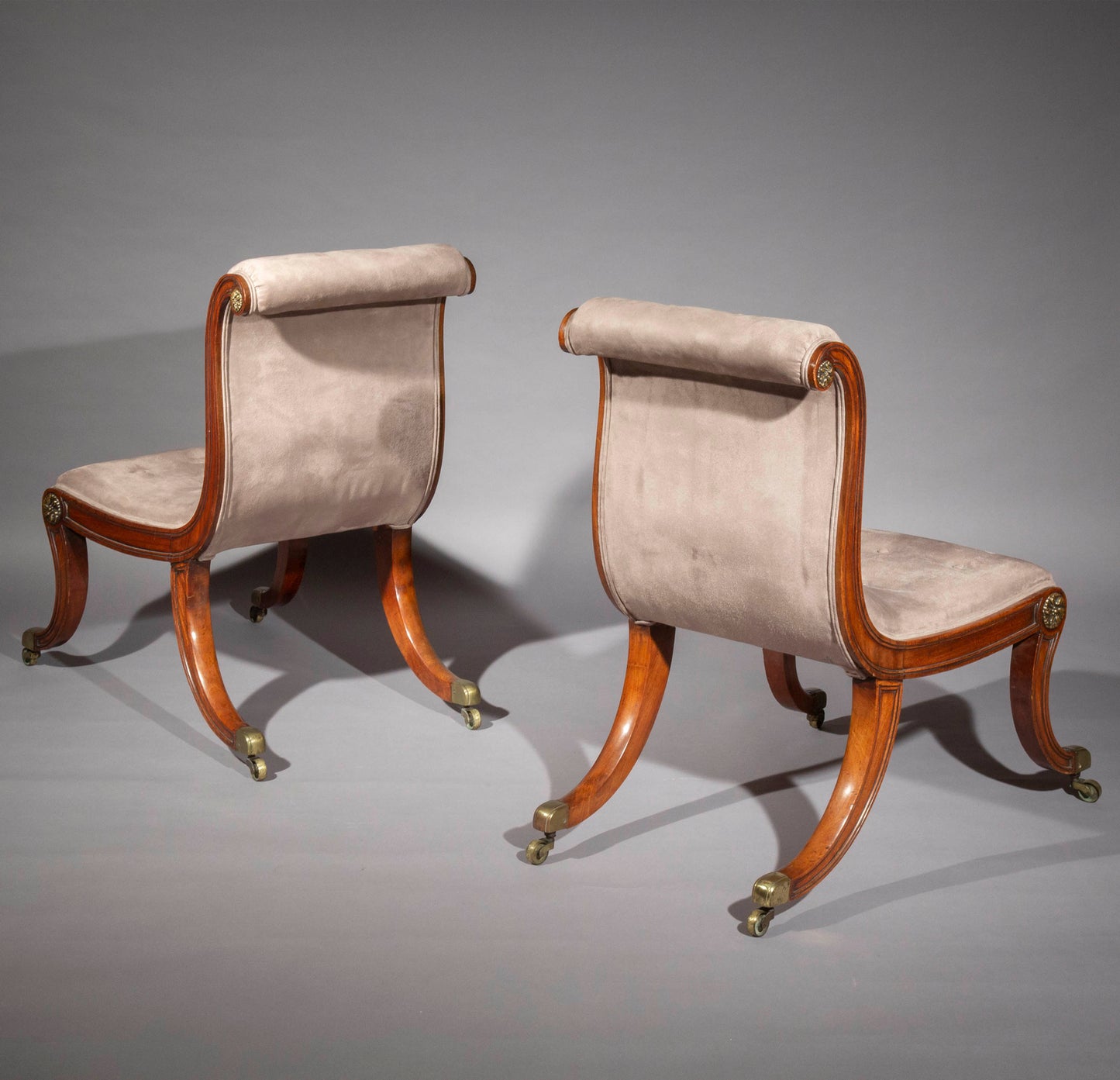
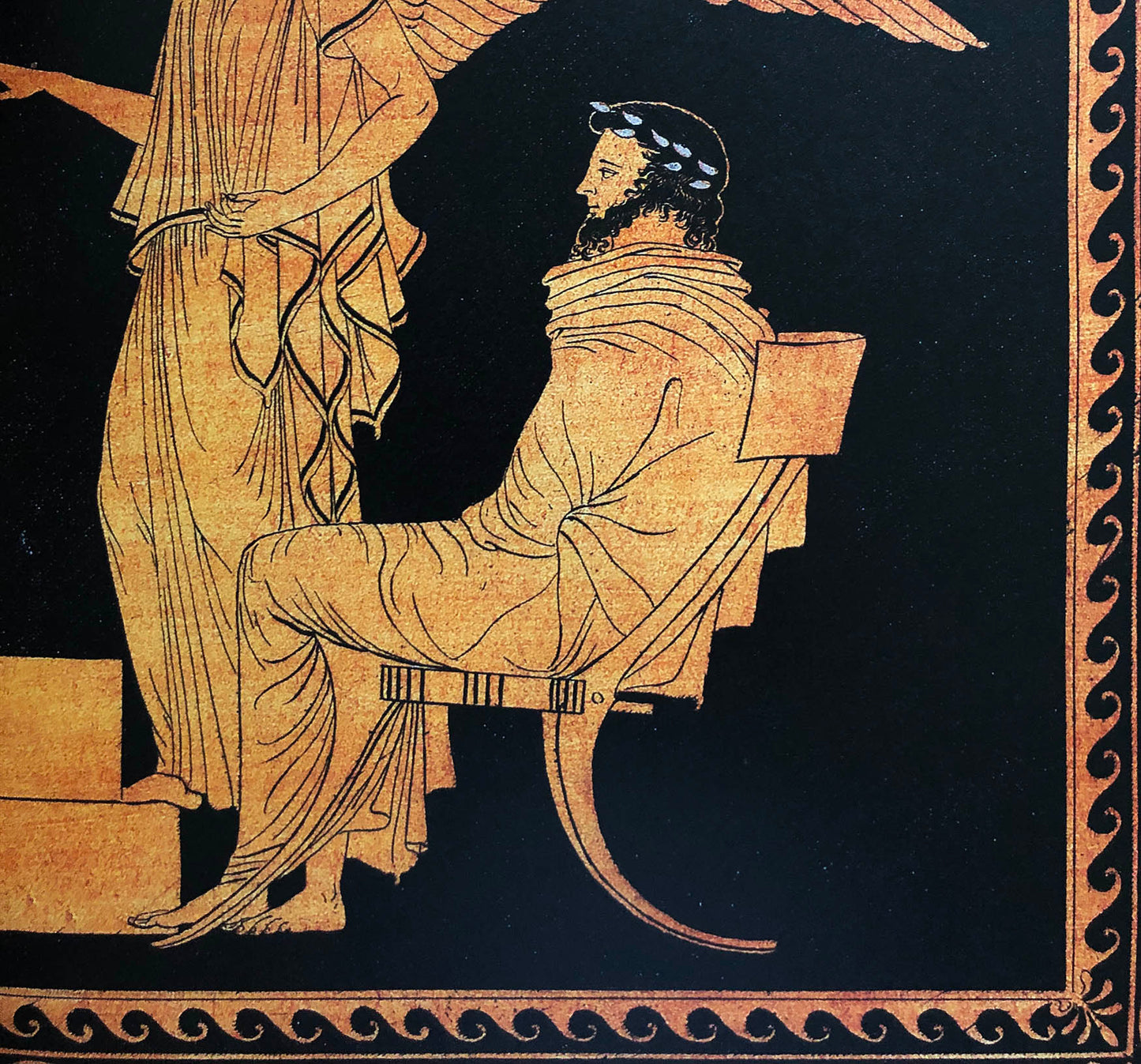
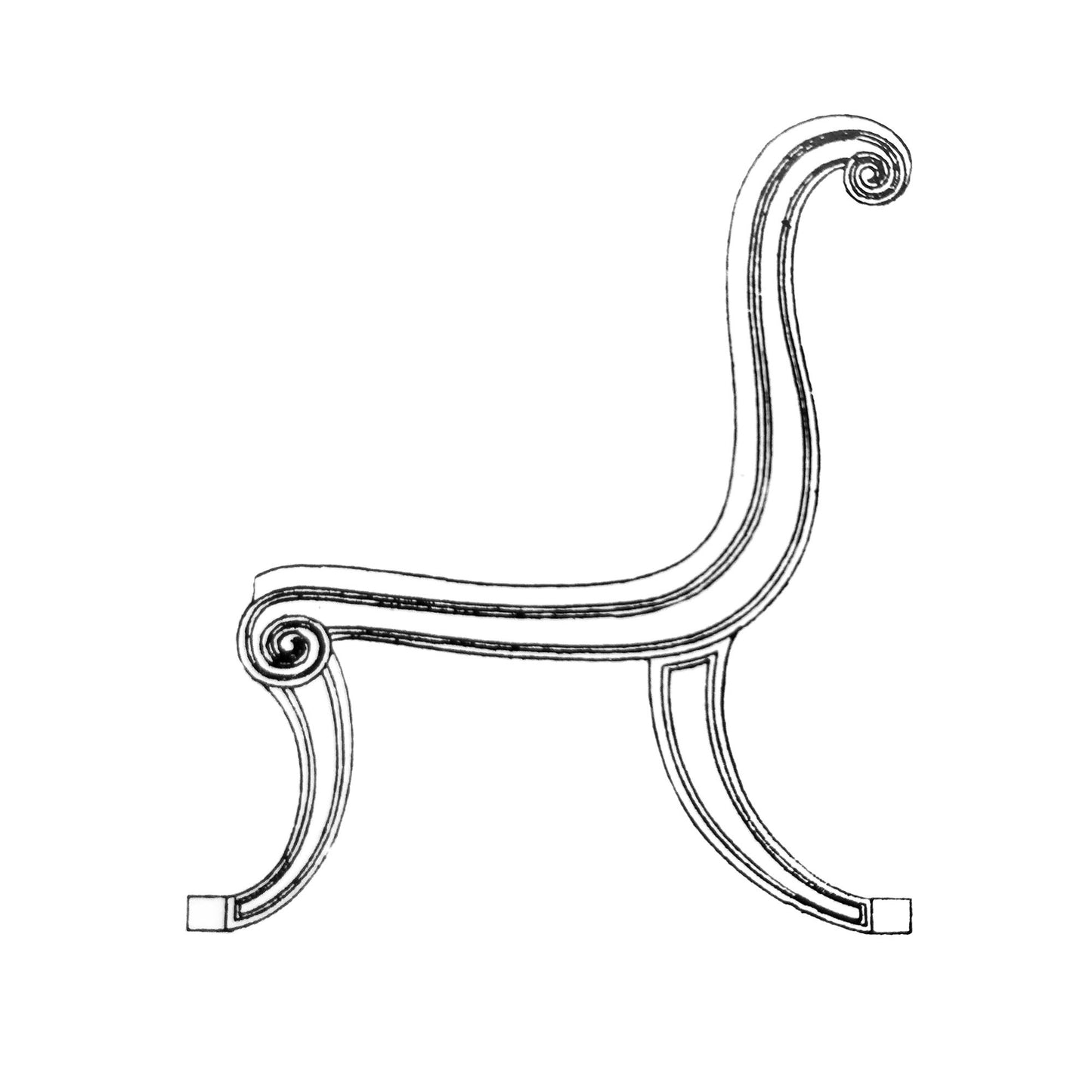
An outstanding pair of Klismos chairs, designed by Thomas Hope, the manufacture attributed to Gillows of Lancaster and London.
England, circa 1807.
Why we like them
This highly individual design with extremely bold, exaggerated curves, was created by the early 19th century tastemaker, Thomas Hope (1769-1831) for his London mansion in Duchess Street, pl. XL in his 'Collection of Designs for Household Furniture and Interior Decoration', published in 1807. Hope drew inspiration from the ancient Greece and Rome, and Klismos form in all iterations was certainly his favourite for seat furniture. An extremely rare and important example of design from this era.
Attribution
Both chairs are stamped 'RW' to front seat rails, identically to a number of pieces, supplied by the Gillows firm to Tatton Park, Cheshire, in the first decade of 1800s. The back rails bear pencil inscription 'Tomlin', which may refer either to the maker or to the client. Such inscriptions can be seen quite often on Gillows pieces.
Thomas Hope was a great collector of antiquities and patron of arts. He became an influential promoter of the Gout Grec, following his grand tour of Greece, Italy and Asia Minor of 1787-1795 which had colossal impact on his taste. His London residence in Duchess Street open to serious art collectors was witness to this passion and was much admired and a great influence on taste in 19th century.
Their highly unusual, superbly graphic profile with boldly scrolled legs and back, is inspired by ancient Greek 'Klismos' chairs, often depicted on Attic pottery starting from circa 400BC.

















